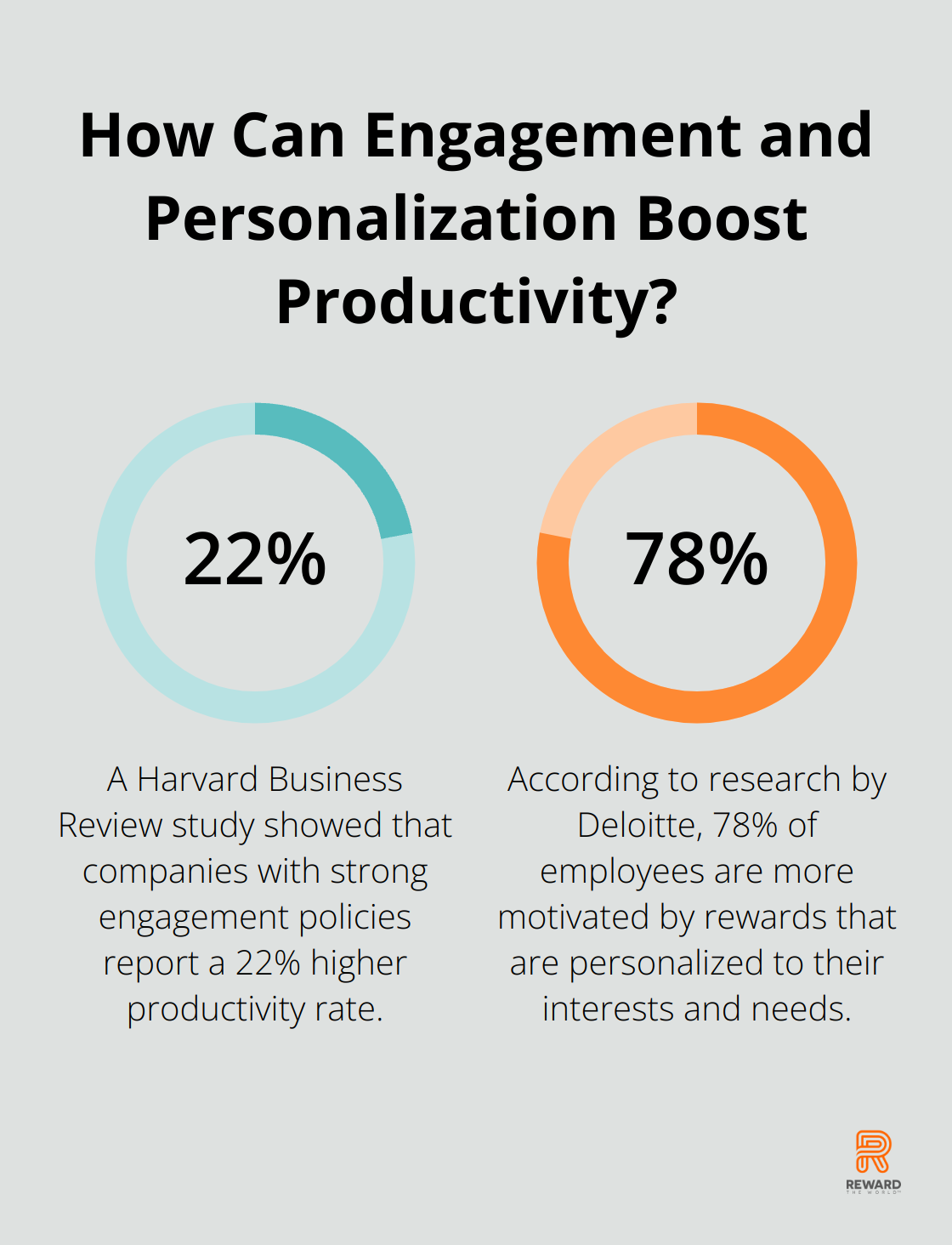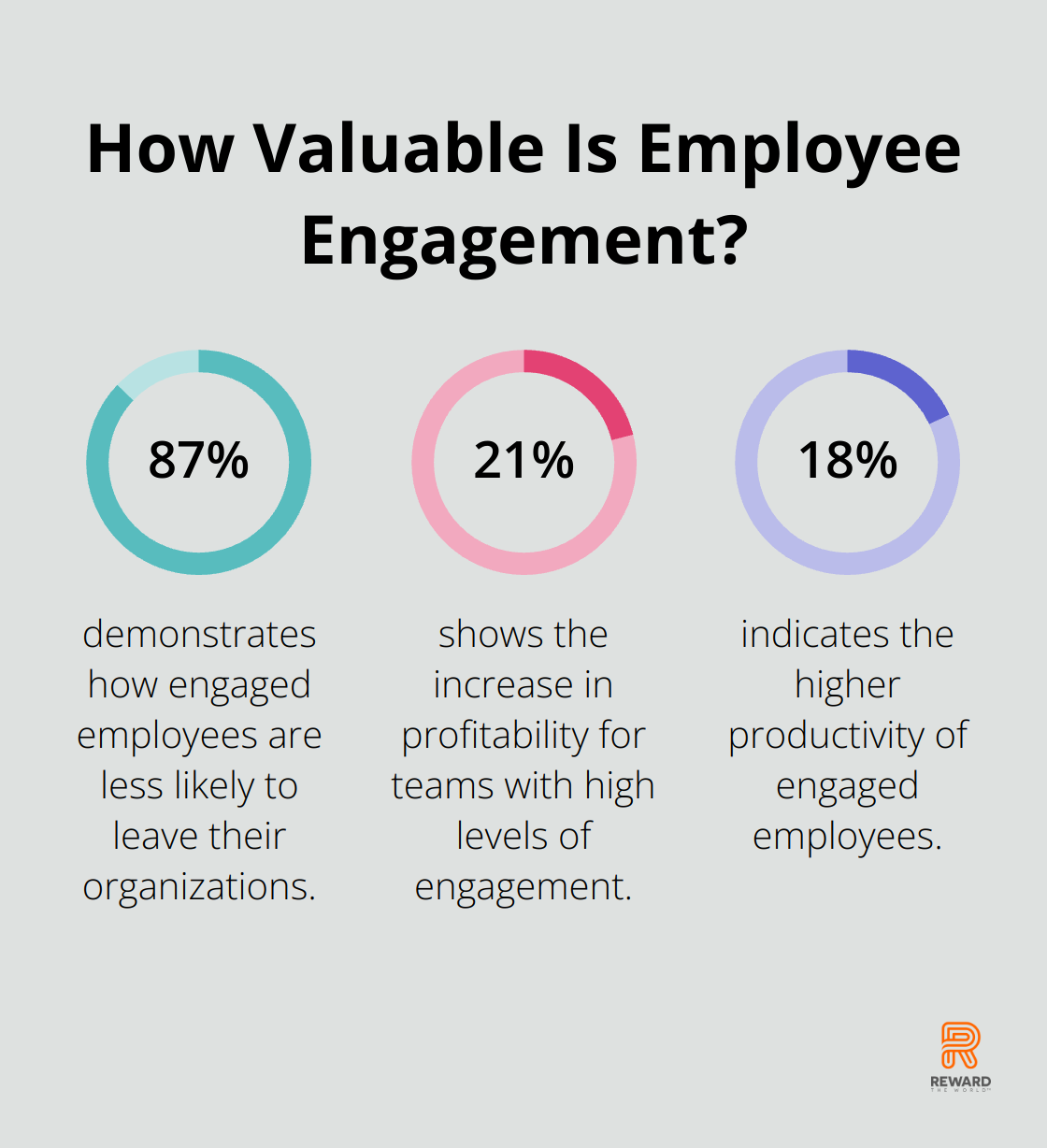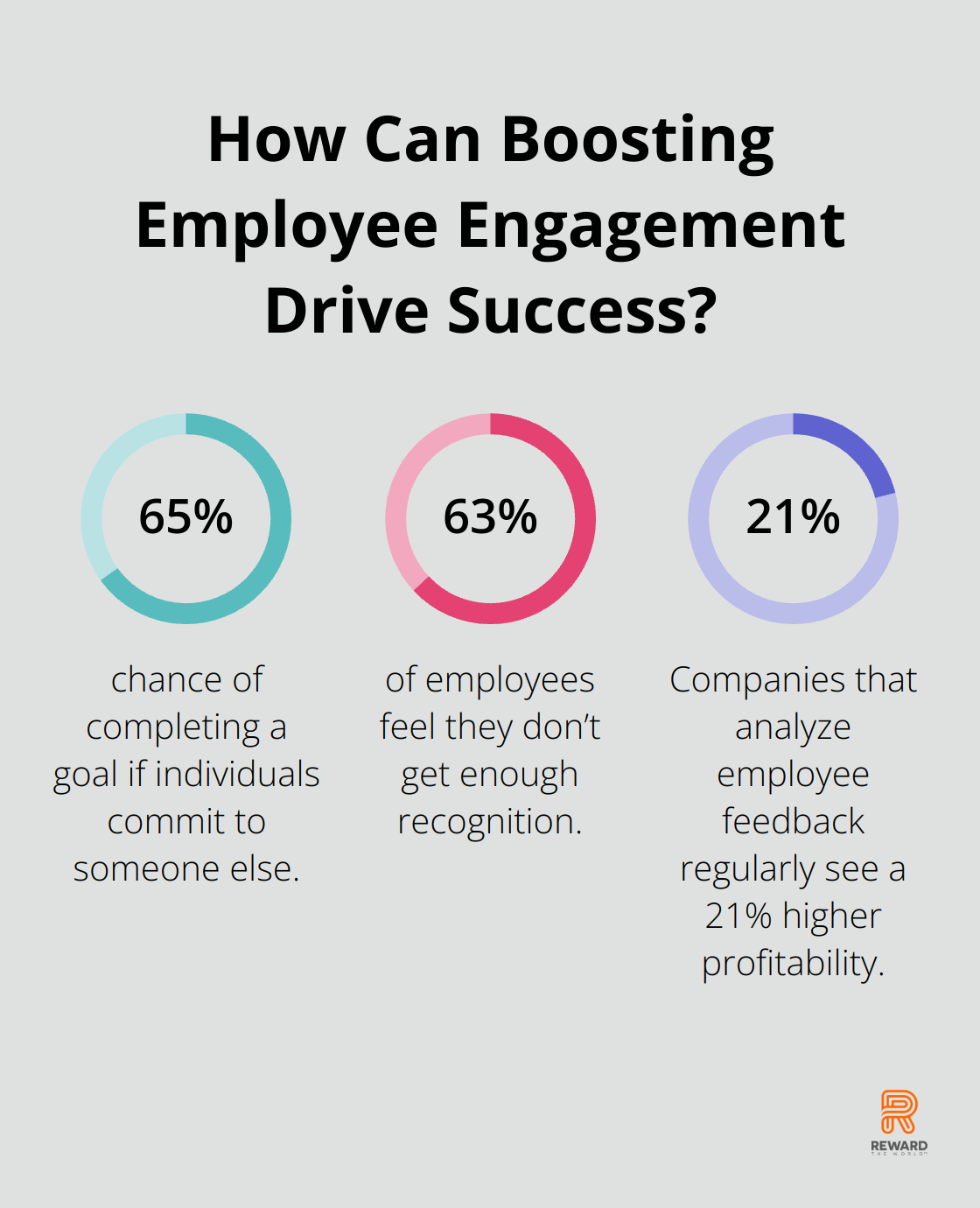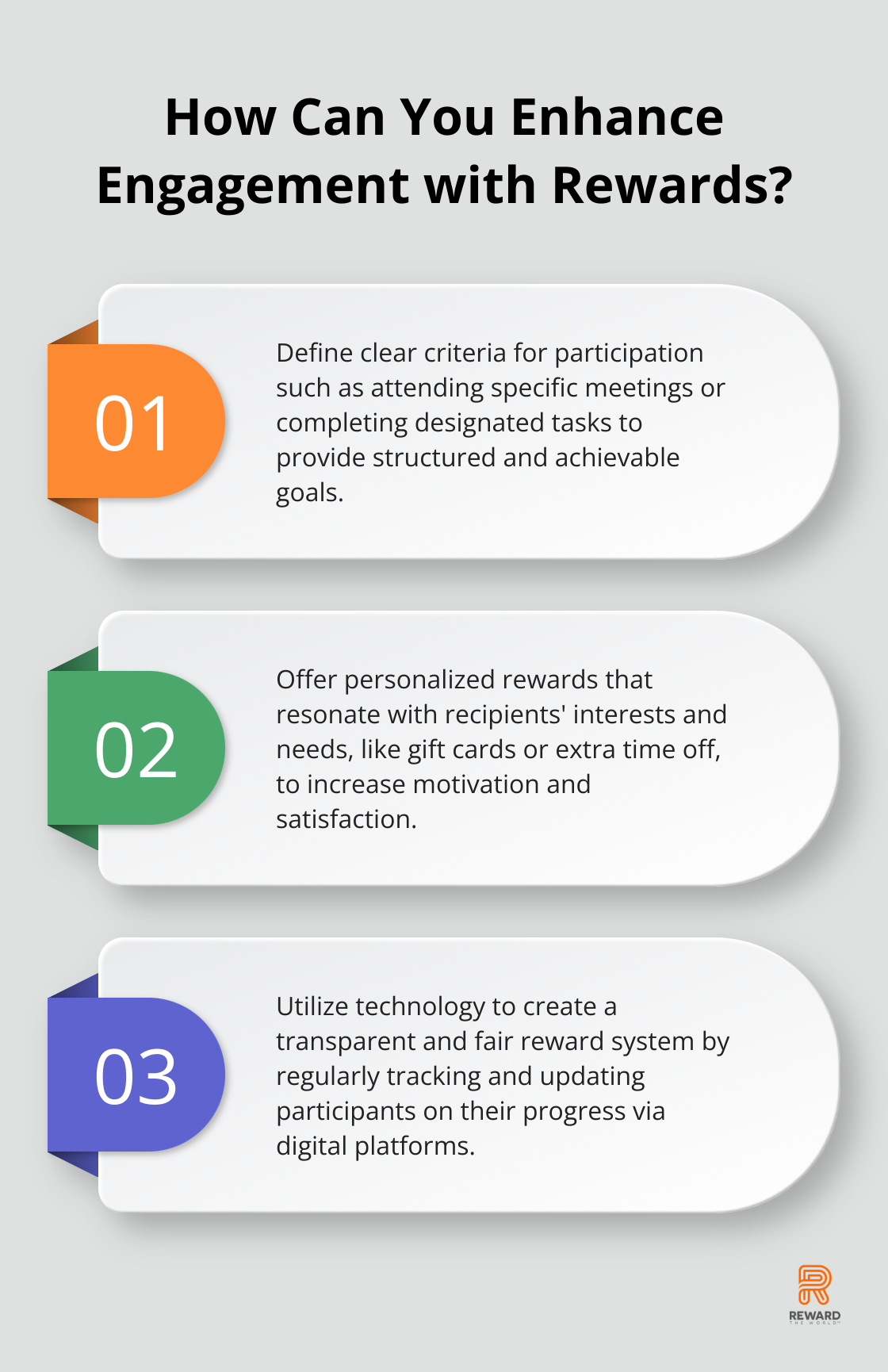
Engaging and motivating participants is essential for driving success in any organization.
At Reward the World, we believe in the power of participation driving rewards to boost productivity and enhance performance.
In this guide, we explore the core components, benefits, and practical advice for implementing these systems effectively.
What Are Participation Driving Rewards?
Participation driving rewards are systems designed to incentivize individuals to engage more actively in various activities, whether in a workplace, a community, or an educational setting. By rewarding participation, these systems aim to improve engagement, productivity, and overall performance.
The Concept Behind Participation Driving Rewards
At their core, participation driving rewards focus on encouraging desired behaviors through positive reinforcement. Unlike traditional reward systems that might emphasize performance metrics alone, participation rewards highlight the importance of consistent engagement. The primary goal is to cultivate an environment where individuals feel motivated to contribute regularly. A Harvard Business Review study showed that companies with strong engagement policies report a 22% higher productivity rate. Clearly, continuous participation can lead to significant overall improvements.
Historical Background
The concept of rewarding participation dates back to early educational systems where students were given gold stars or certificates for their involvement in class activities. Over time, this idea expanded into corporate settings. For instance, in the 1980s, Japanese companies popularized the concept of quality circles where employees were rewarded for their active participation in problem-solving groups. This evolution highlights the long-standing value placed on encouraging active involvement as a means to achieve better outcomes.

By understanding the roots of these systems, organizations can appreciate their effectiveness and tailor modern applications accordingly.
Key Components and Mechanisms
To implement a successful participation driving reward system, several key components must be in place. First, the criteria for participation must be clearly defined. This might include attendance at meetings, contributions to discussions, completion of tasks, or involvement in community events.
Second, the rewards themselves should be meaningful to recipients. According to research by Deloitte, 78% of employees are more motivated by rewards that are personalized to their interests and needs. Thus, organizations should consider offering a variety of rewards, such as gift cards, extra time off, or public recognition.
Lastly, the system must be transparent and fair. Participants need to understand how they can earn rewards and trust that the process is impartial. Regular feedback and updates can help maintain transparency. Additionally, digital platforms can streamline this process, as discussed in the post on digital rewards programs.
Real-life application of these components simplifies the process and ensures a greater buy-in from participants. For practical guidelines, incorporating robust technology systems to track and manage participation is crucial.
In the next chapter, we’ll explore actual case studies and data showing the impact of well-implemented participation driving reward systems.
Advantages of Participation Rewards
Participation rewards can transform how organizations engage their members, boosting not only morale but also tangible outcomes. Let’s dive into the key benefits and real-world examples of successful implementations.
Boosting Engagement and Motivation
Participation rewards have a powerful impact on motivation levels. A Gallup report found that organizations with high employee engagement outperform their peers by 147% in earnings per share. By recognizing consistent participation, these reward systems create an environment where individuals feel valued and more willing to contribute actively.

For example, a study by Bersin & Associates highlighted that companies with recognition programs that are highly effective in improving employee engagement have 31% lower voluntary turnover. This illustrates the direct link between participation rewards and increased retention, as employees are motivated to stay when their efforts are acknowledged.
Enhancing Productivity and Performance
When individuals know their participation is valued, productivity soars. A study by the Corporate Leadership Council found that engaged employees are 87% less likely to leave their organizations and 18% more productive. By fostering a culture of engagement, participation rewards drive better performance and higher productivity.
For instance, Deloitte’s research indicates that teams with high levels of engagement saw a 21% increase in profitability. Organizations implementing participation rewards can thus witness substantial improvements in their bottom line.
Case Studies from Successful Implementations
Real-life examples show the effectiveness of these programs. For example, Google’s Peer Bonus program allows employees to recognize each other’s contributions. This practice has been linked to higher innovation and job satisfaction, underpinning Google’s reputation as a leading employer.
Another compelling case is that of 3M’s participation-focused incentives, which encourage employees to spend 15% of their time on projects of their interest. This policy has led to innovative breakthroughs such as Post-it Notes, proving that participation rewards can drive creativity and productivity.
Finally, Salesforce uses its V2MOM framework which stands for Vision, Values, Methods, Obstacles, and Measures, to align employees with the company’s goals. By tying participation to both individual and organizational success, Salesforce maintains high levels of alignment and productivity.
Participation rewards have proven their worth across various industries and settings. When designed effectively, they foster a motivated, engaged, and high-performing environment. For further insights, check out our detailed guide on personalized rewards.
How to Implement Participation Driving Rewards
Setting Clear and Achievable Goals
One of the cornerstones of successful participation driving rewards is setting clear, achievable goals. Vague or overly ambitious targets can demotivate participants. Clearly defined objectives, such as attending a set number of meetings or completing specific tasks, are essential. Research by the American Society for Training and Development (ASTD) found that individuals have a 65% chance of completing a goal if they commit to someone else. This statistic underscores the importance of clear communication and goal setting in any rewards program.
Designing Fair and Transparent Reward Systems
Fairness and transparency in your reward system are non-negotiable. Employees need to trust that the rewards system is impartial and that they have a real chance of earning rewards. Accenture found that 63% of employees feel they don’t get enough recognition, often due to perceived unfairness in reward distribution. Establishing transparent criteria and providing regular updates can mitigate these concerns. Utilizing technology can aid in maintaining transparency, as digital reward platforms can automatically track and update participants on their progress.
Monitoring and Adapting Based on Feedback
A successful participation rewards program isn’t static; it evolves based on participant feedback. Regularly gathering and analyzing feedback helps identify what’s working and what needs adjustment. According to a report by Qualtrics, companies that actively analyze employee feedback regularly see a 21% higher profitability. Incorporating tools like surveys or feedback loops can provide valuable insights into your program’s effectiveness. Additionally, consider implementing real-time analytics to monitor participation and make data-driven decisions.

For more insights, you can read about how to optimize your participation rewards program.
Implementing participation driving rewards effectively requires attention to detail and a commitment to ongoing improvement. Start with clear goals, ensure transparency, and adapt based on continuous feedback to keep participants motivated and engaged.
Conclusion
Participation driving rewards offer a structured approach to engaging and motivating individuals across various environments. By focusing on consistent engagement, these systems encourage behaviors that lead to improved productivity, better performance, and higher morale.

We’ve discussed how these programs can align with the history of rewarding participation, leverage key components such as clear criteria, meaningful rewards, and transparency, and achieve substantial benefits as demonstrated by real-world examples. Studies underline their effectiveness—organizations with strong engagement policies report 22% higher productivity according to Harvard Business Review, while Gallup notes a 147% increase in earnings per share in highly engaged companies.
The long-term benefits of participation driving rewards are clear. They foster a culture where contributions are valued, boosting retention and satisfaction. For instance, research by Bersin & Associates shows a 31% reduction in voluntary turnover in companies with effective recognition programs. This effect is further supported by data from the Corporate Leadership Council, which found an 18% productivity increase among engaged employees. Regular participation doesn’t just benefit the individual; it transforms organizational dynamics and outcomes.
We at Reward the World are committed to helping businesses harness the power of participation driving rewards. Our global incentives platform provides an extensive array of rewards tailored to diverse demographics, ensuring that engagement and recognition efforts resonate with all participants. For more insights and practical tips on optimizing your reward programs, visit our detailed guide on personalized rewards.
Adopting and continuously adapting participation driving rewards is a strategic move for any organization aiming for sustained success. By investing in these systems, businesses can cultivate an engaged, motivated, and high-performing environment. For those looking to transform their engagement strategies, explore the benefits offered by Reward the World.
